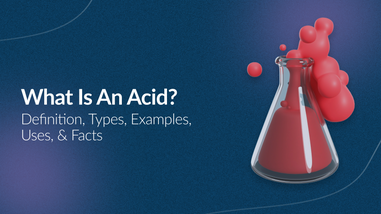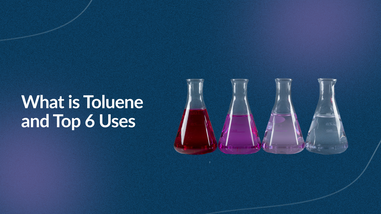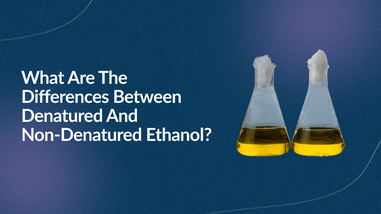- No products in the cart.
What is Hydrofluoric Acid?
Hydrofluoric acid is the aqueous (aq) form of hydrogen fluoride (HF). It is a colorless and corrosive acid that can pose a legitimate danger when in contact with human skin, lungs, and eyes. However, due to its natural reactivity, it is useful when applied for industrial purposes. Hydrofluoric acid is extremely corrosive because the fluorine ion is highly reactive. However, hydrofluoric acid is considered a “weak” acid because it does not fully dissociate into water.

Top 5 Uses of Hydrofluoric Acid:
Hydrofluoric acid has a variety of uses across industrial and laboratory applications.
1. Glass and Metal Etching
Hydrofluoric acid has long been used as an etchant for glass and metal materials. Glass is made of silicon dioxide, which is generally an unreactive material. However, hydrofluoric acid molecules are able to disrupt the silicon-oxygen bonds within the glass, allowing for the material to break down. Hydrofluoric acid can dissolve metals (with the exception of nickel and its alloys: silver, gold, and platinum). Teflon, chlorosulfonated polyethylene, neoprene, and natural rubber are all resistant to hydrofluoric acid’s corrosivity.
2. Industrial Applications
It can also be used to purify aluminum and prepare surfaces for silicon fabrication processes in electronics. Hydrofluoric acid can also be applied as a cleaning agent in rust removers, and as an ingredient in manufacturing stain removers, solvents, and resins. It can also be used as a reagent to dissolve silicates and oxides.
3. Producing Fluorocarbons
Hydrofluoric acid is commonly used to produce fluorocarbons (chemical compounds made of carbon and fluorine). Fluorocarbons are widely used in aerosol sprays and refrigerants.
4. Manufacturing Products
Hydrofluoric acid is also used in producing several household items such as fluorescent light bulbs, plastics, and electrical components. It can also be used in the production of herbicides, high-octane gasoline, and aluminum.
5. Pharmaceuticals
Hydrogen fluoride (Hydrofluoric acid) is used as a precursor to the majority of fluorine compounds. These include pharmaceuticals like the common drug Fluoxetine.
Chemical Properties: Solubility, Molar Mass, and Molecular Density for Hydrofluoric acid
Hydrofluoric acid is the solution of hydrogen fluoride in water (HF (aq)). It has a molar mass of 20.0063 g/mol, and a molecular density of 1.15 g/mL at 25 °C. Hydrofluoric acid has a pH of around 3.
Cautions when using hydrofluoric acid.
Extreme caution should always be exercised when handling hydrofluoric acid. Although it is considered a “weak” acid, it is highly corrosive and harmful to people. It is considered a contact poison, and when in contact with human skin, hydrofluoric acid can easily penetrate and damage skin cells and tissues in the body. Skin irritation as a result of contact with hydrofluoric acid also has a delayed response, meaning that the victim may not notice or feel the effects of the acid until after the initial exposure, which can worsen effects if not treated properly. Inhalation of hydrogen fluoride (Hydrofluoric acid in a gaseous state) can damage lung tissues and cause fluid accumulation, as well as swelling the lungs.
Protecting oneself and all others working with and around hydrofluoric acid is essential. Appropriate PPE (personal protective equipment) should be worn at all times. Gloves, eyewear, long sleeves, and bodywear can help protect persons from unwanted contact with the acid. If the acid is splashed onto any exposed areas, remove any affected clothing and wash the skin area thoroughly with water. If the eyes are exposed to hydrofluoric acid, rinse thoroughly with an eyewash. Dispose of affected materials accordingly. Hydrofluoric acid is hazardous waste and should be disposed of properly and in accordance with laboratory guidelines.
Due to its high reactivity with glass and moderate reactivity with certain metals, hydrofluoric acid should be stored in plastic containers. Keep hydrofluoric acid away from ammonia and other bases.
Where can you purchase hydrofluoric acid?
Hydrofluoric acid can be purchased directly from Lab Pro’s official website. Hydrofluoric acid is available in 10% solutions and in larger gallon volumes.
For over 40 years, Lab Pro Inc. has been committed to delivering the highest quality chemicals, distance learning kits, lab supplies, and cleanroom PPE apparel to medical device companies and laboratories worldwide. To learn more, visit the biggest Lab Supply showroom in California, or contact us online or at 888-452-2776.












































